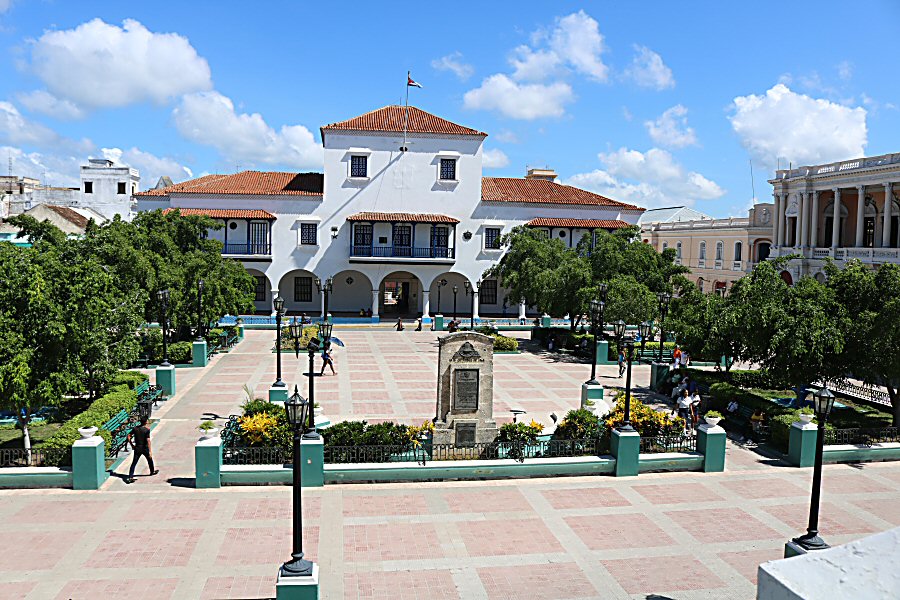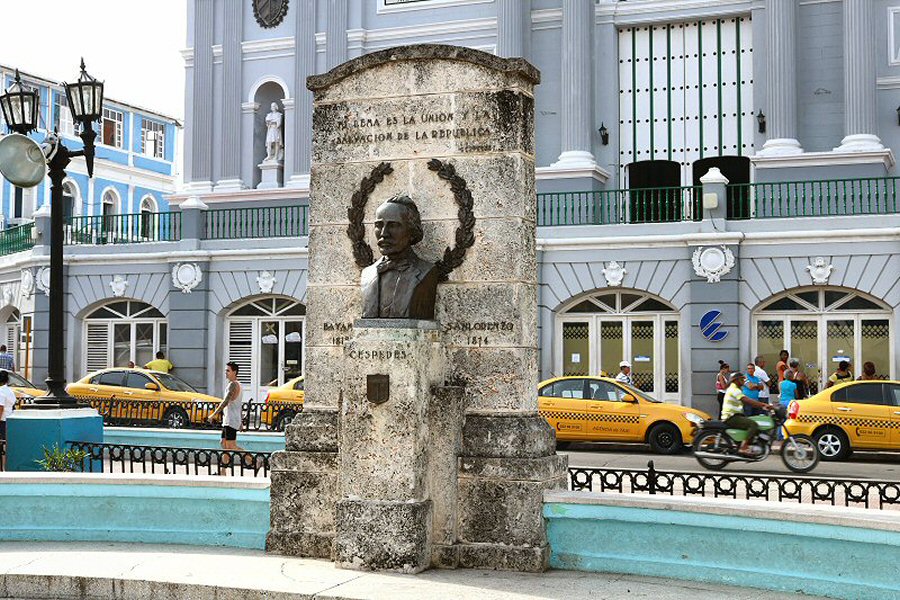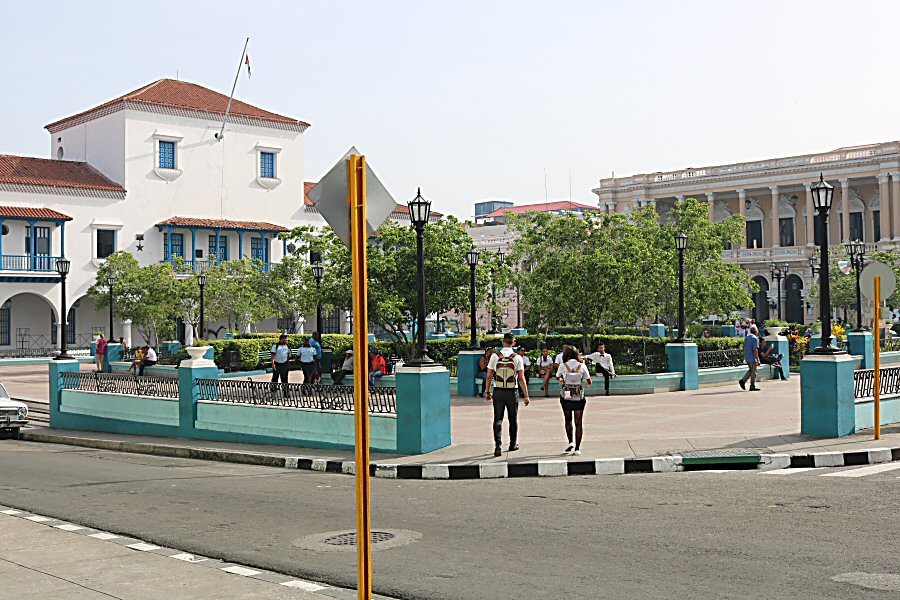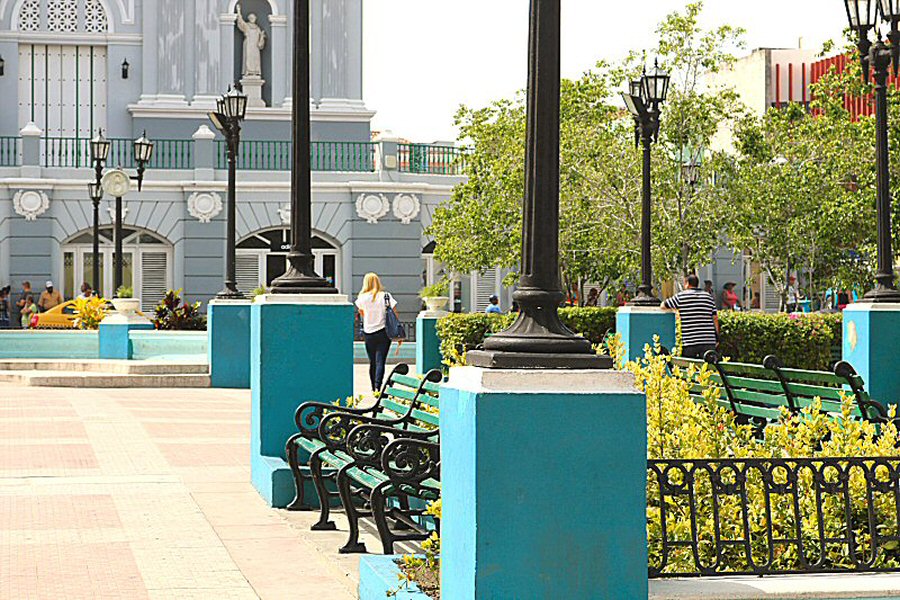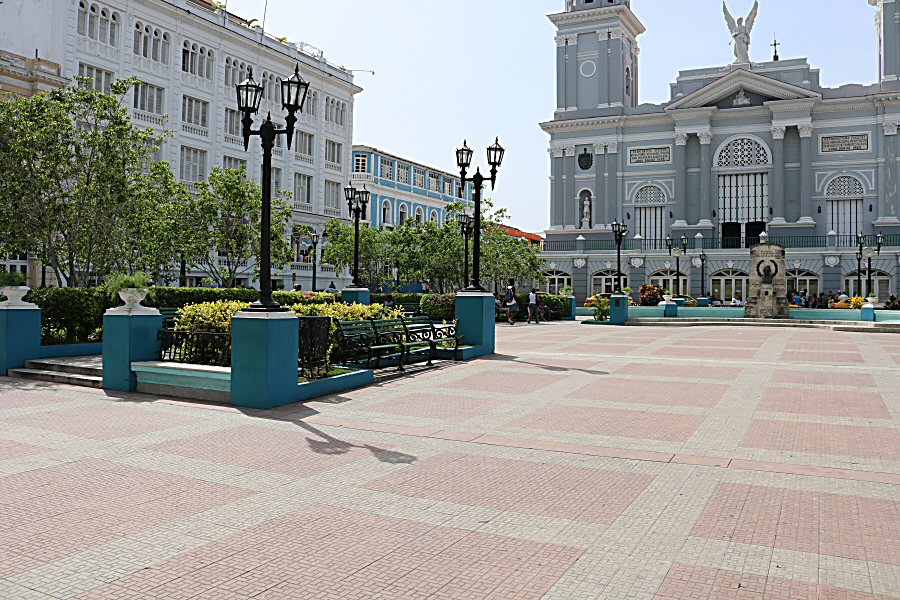The Céspedes Park is bordered by the
Heredia, the Aguilera, the Santo Tomás and the General Lacret
streets.


The space shows great animation every hour due to multiple activities of political, cultural and social nature. The affluence of the Santagueros increases towards the night by the addition of the foreigners. Parque Céspedes, one of the three main squares of the city, is also the center of the daily life in Santiago without any doubt.
The Parque Céspedes was built in 16th century by the Spanish conquistadors. It is also the first square of the city. The Spanish soldiers carried out their military exercises and parades in this square; thus, it received the name Plaza de Armas (Square of the Weapons). Later, many names were given to the square, such as Plaza de la Reina Isabel or Isabel la Católica in homage to the Queen of Spain, Plaza de la Constitución, Plaza de La Reina, and Plaza de La Reina Victoria. In the first decades of the 20th century, the square received its final name as Parque Céspedes in remembrance of Carlos Manuel de Céspedes, the Father of the Homeland, and experienced a total transformation.
It is a place in the heart of the city that witnessed the evening promenade of flirting ladies and gentlemen for centuries. Unfortunately, in recent years this tradition is replaced by the indecent harassment of some local men the Western women, even seldom. It is more of a plaza than a park, where people of different ages rest under the shade of the trees and watch the sightseers that wander through the park between the visits of the surrounding symbol buildings.
It is almost square-shaped, occupying an area of about 2.500 m2. Its length is 1,5 time bigger than its width. The whole park is surrounded by a low wall of stone topped with cast iron fence. Two pedestrian circulation paths cross the park, dividing it into four large gardens. The park is accessed easily by these wide entrances that are 6 meters wide, except the entrance from the Aguilera Street that is 8 meters wide. At every section, wooden banks are interspersed between the small stone pillars that support the pedestrian luminaires, so that the whole area can be lightened equally at night. In each garden waterspouts are placed. The floor is covered by anti-slip concrete slabs in red and grey tones that are laid down in geometric motifs.
At its south end, there is a monument with the bust of Carlos Manuel de Céspedes, El Padre de la Patria (Father of the Homeland), that stands on a rectangular granite platform, accessed through two curved steps. This monument with the bust, made of brass, was erected in 1953, and it is the work of the Cuban sculpture Montero. On the monument there is a quote from Céspedes: Mi lema es la unión y la salvación de la República (My motto is the union and salvation of the Republic). His head is crowned by two bay leaves that symbolize the force and the justice. On the backside of the monument you can read his address in Guáimaro on April 11, 1869, and the official inauguration date of the monument.
The square is surrounded by the most emblematic buildings of the city: the cathedral (Catedral de Nuestra Señora de la Asunción), Diego Velázquez House Museum, the old town hall, and the Hotel Casa Granda.
